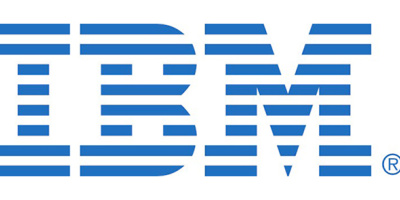Many businesses still highly vulnerable to security attacks damaging brand reputations and business operations.
A new bi-annual report from security experts TippingPoint, SANS Institute and Qualys highlights the most significant attacks over the last six months, as well as the vulnerabilities these attacks exploit and how they can harm business. The report shows that many businesses are still extremely vulnerable to security attacks that can damage brand reputations and business operations. It helps businesses to review their defenses and ensure networks are up to date and able to quickly respond to today's emerging attacks.
Security attacks are growing in quantity and frequency, as well as becoming more impactful to business operations. With so many different types of security attacks targeting the enterprise, it is becoming difficult for organizations to see which threats pose the greatest risk. This report uses current data from appliances and software in thousands of targeted organizations to provide an accurate view of the attacks and the vulnerabilities they exploit.
"By combining information on attacks with data on specific vulnerabilities, we can provide organizations with real, actionable information for protecting their systems," said Alan Paller, director of research for the SANS Institute. "Our goal in releasing this is to give overwhelmed security professionals the tools they need to prioritize their resources and security practices to achieve the best protection for their network."
Key findings of the Top Risks Report include:
-- Unpatched popular client-side applications put businesses at risk for data theft: PC applications often remain unpatched, compromising these machines to be used to propagate attacks and compromise internal computers. This leaves a window open for hackers to steal critical data, impact network performance and affect business continuity. Examples of these applications include Adobe Acrobat Reader, Microsoft Office and Apple QuickTime.
-- The number of Web application attacks is increasing, elevating the threat posed by previously trusted Web sites: Web applications comprise more than 60 percent of the total attack attempts occurring on the Internet. These vulnerabilities are being exploited widely to convert trusted Web sites into malicious servers serving client-side exploits.
-- Operating system vulnerabilities are decreasing, but still pose a significant threat to an organization's security resources: Operating systems (OS) have a lower number of vulnerabilities that can be remotely exploited to become massive Internet worms. The Conficker/Downadup is the exception and represents a major hole in many organizations' security strategy. Attacks on Microsoft OS were dominated by Conficker/Downadup worm variants. For the past six months, over 90 percent of the attacks recorded for Microsoft targeted the buffer overflow vulnerability described in the Microsoft Security Bulletin MS08-067.
-- A growing number of vulnerability researchers is causing a backlog of unpatched software and a greater risk that these will be exploited. The number of people discovering zero day vulnerabilities is growing fast, yielding a growing number of vulnerabilities that remain unpatched -- some for as long as two years. This lag time in patching increases the chance of hackers creating exploits targeting those vulnerabilities.
"The security attacks we describe in this report pose the highest risk for disrupting business operations," said Rohit Dhamankar, director of TippingPoint's DVLabs security research team. "For organizations, understanding these attacks and how they exploit the vulnerabilities inherent in the network is a critical first step in building an effective security strategy."
"Our data which is derived anonymously from over 100 Million scans is showing a lag in the installation of security patches to productivity applications such as Abode Reader, Microsoft Office and Apple's QuickTime," added Wolfgang Kandek, CTO of Qualys and author of the Laws of Vulnerabilities. "Since these applications are widely installed, we advise organizations to include them in their regular patching process."
In addition to identifying security risks, this report also provides recommendations for mitigating these threats. One of the report's most valuable insights discusses the Twenty Critical Controls for Effective Cyber Defense, which were released a few weeks ago. These controls gather the best practices from renowned security researchers. This report will map these controls to the specific vulnerabilities discussed.
Interested parties can download the full report at www.tippingpoint.com/toprisks or from SANS Web site at http://www.sans.org/top-cyber-security-risks/.
About SANS Institute
SANS is the most trusted and by far the largest source for information security training and certification in the world. It also develops, maintains, and makes available at no cost, the largest collection of research documents about various aspects of information security, and it operates the Internet's early warning system - Internet Storm Center. SANS also sponsored the creation of GIAC, a leading industry security certification. The SANS (SysAdmin, Audit, Network, Security) Institute was established in 1989 as a cooperative research and education organization. Its programs now reach more than 165,000 security professionals around the world. A range of individuals from auditors and network administrators, to chief information security officers are sharing the lessons they learn and are jointly finding solutions to the challenges they face. At the heart of SANS are the many security practitioners in varied global organizations from corporations to universities working together to help the entire information security community.
About Qualys
Qualys, Inc. is the leading provider of on demand IT security risk and compliance management solutions--delivered as a service. Qualys' Software-as-a-Service solutions are deployed in a matter of hours anywhere in the world, providing customers an immediate and continuous view of their security and compliance postures.
The QualysGuard service is used today by more than 3,500 organizations in 85 countries, including 40 of the Fortune Global 100 and performs more than 200 million IP audits per year. Qualys has the largest vulnerability management deployment in the world at a Fortune Global 50 company.
Qualys has established strategic agreements with leading managed service providers and consulting organizations including BT, Etisalat, Fujitsu, IBM, I(TS)2, LAC, NTT, SecureWorks, Symantec, Tata Communications and TELUS. For more information, please visit www.qualys.com.





















 More than ever, there is a demand for IT to deliver innovation. Your IBM i has been an essential part of your business operations for years. However, your organization may struggle to maintain the current system and implement new projects. The thousands of customers we've worked with and surveyed state that expectations regarding the digital footprint and vision of the company are not aligned with the current IT environment.
More than ever, there is a demand for IT to deliver innovation. Your IBM i has been an essential part of your business operations for years. However, your organization may struggle to maintain the current system and implement new projects. The thousands of customers we've worked with and surveyed state that expectations regarding the digital footprint and vision of the company are not aligned with the current IT environment. TRY the one package that solves all your document design and printing challenges on all your platforms. Produce bar code labels, electronic forms, ad hoc reports, and RFID tags – without programming! MarkMagic is the only document design and print solution that combines report writing, WYSIWYG label and forms design, and conditional printing in one integrated product. Make sure your data survives when catastrophe hits. Request your trial now! Request Now.
TRY the one package that solves all your document design and printing challenges on all your platforms. Produce bar code labels, electronic forms, ad hoc reports, and RFID tags – without programming! MarkMagic is the only document design and print solution that combines report writing, WYSIWYG label and forms design, and conditional printing in one integrated product. Make sure your data survives when catastrophe hits. Request your trial now! Request Now. Forms of ransomware has been around for over 30 years, and with more and more organizations suffering attacks each year, it continues to endure. What has made ransomware such a durable threat and what is the best way to combat it? In order to prevent ransomware, organizations must first understand how it works.
Forms of ransomware has been around for over 30 years, and with more and more organizations suffering attacks each year, it continues to endure. What has made ransomware such a durable threat and what is the best way to combat it? In order to prevent ransomware, organizations must first understand how it works. Disaster protection is vital to every business. Yet, it often consists of patched together procedures that are prone to error. From automatic backups to data encryption to media management, Robot automates the routine (yet often complex) tasks of iSeries backup and recovery, saving you time and money and making the process safer and more reliable. Automate your backups with the Robot Backup and Recovery Solution. Key features include:
Disaster protection is vital to every business. Yet, it often consists of patched together procedures that are prone to error. From automatic backups to data encryption to media management, Robot automates the routine (yet often complex) tasks of iSeries backup and recovery, saving you time and money and making the process safer and more reliable. Automate your backups with the Robot Backup and Recovery Solution. Key features include: Business users want new applications now. Market and regulatory pressures require faster application updates and delivery into production. Your IBM i developers may be approaching retirement, and you see no sure way to fill their positions with experienced developers. In addition, you may be caught between maintaining your existing applications and the uncertainty of moving to something new.
Business users want new applications now. Market and regulatory pressures require faster application updates and delivery into production. Your IBM i developers may be approaching retirement, and you see no sure way to fill their positions with experienced developers. In addition, you may be caught between maintaining your existing applications and the uncertainty of moving to something new. IT managers hoping to find new IBM i talent are discovering that the pool of experienced RPG programmers and operators or administrators with intimate knowledge of the operating system and the applications that run on it is small. This begs the question: How will you manage the platform that supports such a big part of your business? This guide offers strategies and software suggestions to help you plan IT staffing and resources and smooth the transition after your AS/400 talent retires. Read on to learn:
IT managers hoping to find new IBM i talent are discovering that the pool of experienced RPG programmers and operators or administrators with intimate knowledge of the operating system and the applications that run on it is small. This begs the question: How will you manage the platform that supports such a big part of your business? This guide offers strategies and software suggestions to help you plan IT staffing and resources and smooth the transition after your AS/400 talent retires. Read on to learn:
LATEST COMMENTS
MC Press Online